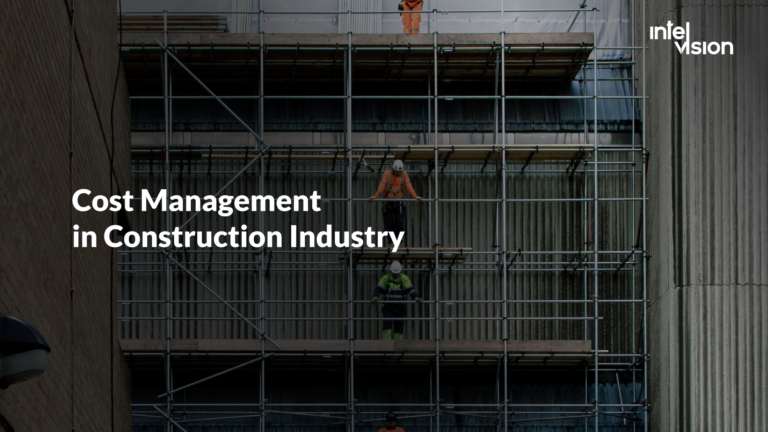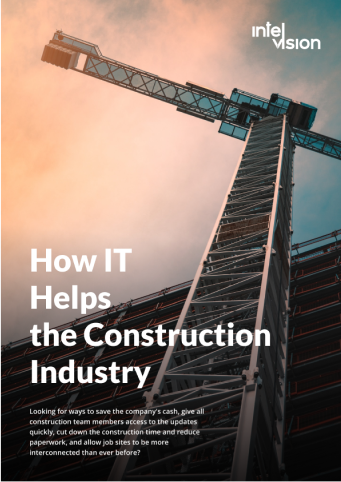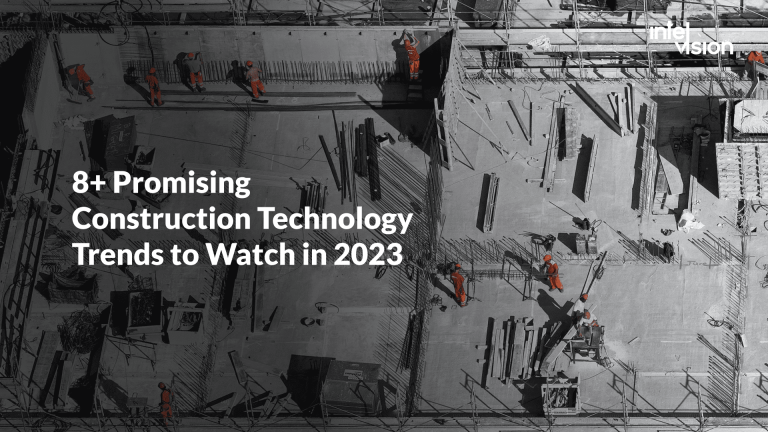
Construction Technology Trends to Watch in 2023
The world is changing at breakneck speed. Due to the growing population of the planet, the demand for houses, schools, hospitals, and other buildings is increasing. At the same time, the fight against climate change and the global pandemic continue to dictate their terms and explain the demand for completely new technology trends in the construction industry.
Construction in 2023 takes place under two slogans: sustainable development and efficiency. We at Intelvision have highlighted the major construction technology trends that are emerging in the industry today and tried to predict how they will develop in the next ten years.
Trend 1: Virtual Reality (VR) & Augmented Reality (AR)
One of the most popular construction industry technology trends is VR/AR. However, let’s first understand the difference between these two concepts. VR stands for virtual reality. The term means a completely computer-generated digital world. To get into it, you need to use a VR helmet or glasses. To interact with the objects of the computer universe, you will also need special devices such as VR joysticks or touch controllers.
Unlike virtual reality, Augmented Reality (AR) is already piercing the digital world into the real one. You can see it without disconnecting from the real world. Human interaction with augmented reality can be possible with the help of special glasses and VR sensors or using a touch screen.
About 57.4 million people used VR in the US, and 90.9 million used AR in 2020. According to Statista, the global market capitalization of VR and AR will reach $296.9 billion in 2024.
The most common example of using VR in the construction industry is educational apps. Virtual reality allows you to create a controlled environment, teach employees how to behave in the workplace, and how to interact with colleagues and equipment without putting them at risk. According to Global Market Insights, the VR training apps market is growing by 13% per year.
Trend 2: Drones & Advanced Construction Robotics
According to Kevin Kelly, the American futurologist, writer, and Wired magazine founder, by the end of the 21st century, 90% of our colleagues will be replaced by robots. The machines have already replaced 90% of its human workers at Uniqlo’s flagship warehouse in Tokyo. And in Amazon fulfillment centers, more than 200 thousand robots work with people altogether.
In construction projects, the use of advanced construction robotics is also not new. For example, a New York-based Construction Robotics company has developed a Semi-Automated Mason robot that can lay 3,000 bricks a day. For comparison: a person puts an average of 500 at the same time.
Separate organizations are developing new construction technologies that will enhance the skills of a person, not replace him with robots. For example, the biomechanical company Ottobock from Germany and the Swedish Hilti company have released the EXO-O1 exoskeletons. Construction robots do not require a connection to a power source. The exoskeleton is suitable for work performed above shoulder level. The weight from the arms is transferred to the hips through the forearm supports using mechanical cable tension. Testing has shown that when using the EXO-O1, the load on the muscles is reduced by up to 47%.
Trend 3: Building Information Modelling (BIM)
One of the most notable trends in construction technology nowadays is Building Information Modeling. It allows you to model any construction objects, including buildings, railways, bridges, tunnels, ports, and more. Unlike a 3D model, BIM software is directly linked to a database. Such a model includes the texture of construction materials, but also other data (technological, economic, etc.) that are relevant to the building. For example, BIM takes into account the physical characteristics of the object, options for placement in space, and the cost of each brick, ceiling, and pipe.
With BIM software, it is possible to predict the future properties and characteristics of construction projects. You can also calculate the building processes that will take place in an object. The data is entered following established standards, it is accurate and updated regularly.
One of the main advantages of the BIM construction software is the time and cost reduction as well as the ability to correct and improve the construction project at the first stages. Information modeling digital technology makes the customer a full participant in the construction. He can visualize what the object will be like and make adjustments as he goes. No 2D drawing will provide such a realistic picture of the future building as is possible with BIM modeling.
Trend 4: Artificial Intelligence (AI) & Automation
Since 2013, investment in artificial intelligence and robots has grown by 70% annually. Moreover, artificial intelligence, machine learning technology, and advanced analytics are predicted to affect about 15% of all occupations in the industry by 2030. Many construction companies will start using drones to monitor the job site and collect data. Artificial intelligence apps help users to analyze the collected information and offer the most optimal solutions.
You can also track your construction workers with the help of their smartphones and wearable technology, and even more as well as learn how building materials and equipment are moved around with the help of attached sensors. AI analyzes collected data and develops a better solution for construction workers. It will improve your construction productivity, decrease downtime, improve the schedule accordingly, and set alarms once it detects someone falling behind the required deadlines. It can serve as a tool to forecast your future project’s outcome and help you improve your overall workflow.
Trend 5: New Building Materials
The construction industry is responsible for 40% of all toxic emissions that contribute to the greenhouse effect. The annual production of concrete is responsible for 2.8 billion tons of CO2 emissions. In this regard, it must change dramatically. The construction processes should become more “green”, and they should be as energy efficient as possible. Many construction firms are phasing out steel, and concrete, switching to wood, recycled plastic and using the perspectives of other construction technology trends that help save the environment.
For example, wood from specially grown forests is more durable and easier to handle. Moreover, carbon dioxide is absorbed by walls and remains in commercial buildings. Experimental construction projects are already being released from wood, for example, Aspern Seestadt in Austria. This is a new quarter, which occupies an area of 240 hectares. It is being built on the job site of the former Aspern airfield, one of the oldest in Europe. The construction company plans to build about 11 thousand houses and offices that can accommodate up to 20 thousand employees. The total investment will amount to €5 billion. The construction of the quarter began in 2009, and by the end of 2021, more than a third has already been completed.
A lake was even dug in the center of the future quarter. The workers and construction managers had to extract about 650 thousand tons of earth for this. However, it wasn’t disposed of but used to create building materials for the houses built in the quarter. Old highways have also found a second use: concrete was dug up and reused when laying roads and streets.
Large-scale recycling is not the only “smart” use of innovative materials at Aspern Seestadt. HoHo Wien, the second tallest wooden building in the world, is also being built here. Due to its 84 m, it will dominate the panorama of the entire quarter. Around 75% of the wood was produced in Austria in compliance with all environmental standards.
HoHo Wien will house a hotel, apartments, restaurants, and offices. The facades and walls of more than 200 residential buildings will be built of wood in the southeastern part of Aspern Seestadt. A distinctive feature of it is the use of precast concrete blocks. Walls, slabs, and beams are prefabricated in factories. This speeds up the construction process and makes it more environmentally friendly.
Many buildings in the quarter have special equipment that measures energy use. The data is sent to the laboratory, where new solutions to optimize consumption will be developed. Aspern Seestadt has already won several awards for advanced building solutions. Similar practices and new technologies in civil construction will be applied in entire Europe and then in the rest of the world soon.
Trend 6: Reuse & Recycle Building Materials
The next important aspect is the reuse of construction materials. Nowadays, it is gradually becoming the norm in Europe and the US. The EU generates about 850 million tons of construction and demolition waste. In the US, more than 600 million tons of construction waste had already been generated by 2018. It is expected that by 2025, the annual volume of construction waste will reach 2.2 billion tons in the world.
But some states demonstrate that even such a large amount can be handled. For example, the Netherlands and Germany recycle about 90% of this kind of waste. The Dutch construction company StoneCycling began to recycle ceramic toilets, steel and old tiles for the production of bricks. Moreover, in the Manhattan area, Hell’s Kitchen built a house from such brick in 2021. It contains up to 60% recycled construction waste, toilet bowls, and other old plumbing fixtures.
StoneCycling bricks laid out the first seven floors and the lobby, which took about 263 tons of construction waste, as well as industrial waste from the Netherlands, Germany, and the UK. Recycled bricks cost $14 each in the US, as opposed to $8 for regular bricks. However, experts expect the price to come down in the future as recycling becomes cheaper.
Trend 7: Prefabricated Modular Construction
In 2023, the modular construction market (offsite construction) is projected to reach $157 billion. With modular construction, labor costs and work time are reduced by 50%. For example, BK Gulf in Dubai modeled and printed the buildings of NYU Abu Dhabi, the Dubai Opera House, and the Dubai Mall in less than a month and then assembled them on-site. Each building took less than a month.
Trend 8: 3D Printing
The search for more sustainable ways of building and automation will lead to the growth of off-site construction and other similar new building construction technologies. As part of this approach, individual parts of buildings will also be pre-printed using 3D printing digital technology.
3D printing technology has already been used in Europe for the construction of individual building structures. However, the first residential building was completely printed on a 3D printer in the Netherlands. At the beginning of May 2021, the fourth in the world and the first in the EU fully 3D-printed residential building welcomed its residents in the suburbs of Eindhoven.
The entire building process took 120 hours or five days. The shape of the irregular boulder was chosen for a reason, the builders wanted to complicate the task and test the capabilities of the 3D printer. The check was successful, and now the company is ready to print complex-shaped houses at the request. The monthly rent of the house is €800, which is half the market rent for a similar property.
The first fully 3D printed house in the Netherlands is just the beginning of a new phase in the construction industry. Residential buildings built using 3D printing technology have some significant advantages over “classic” buildings:
- Construction project implementation speed. The first house was printed in five days. Going forward, the company plans to produce concrete elements on the job site, as well as use a 3D printer to create auxiliary installations, which will reduce construction time and costs.
- Reduction of ecological damage to the environment. With 3D printing, the consumption of cement and waste of building materials is much less than with “traditional” construction processes.
Finally, with 3D printing technology, almost any design idea can be realized. It will allow the construction of buildings of such forms that are difficult and expensive to build using traditional construction methods.
Final Thoughts
Now is the time to innovate and benefit from it. We at Intelvision build intelligent next-generation construction software at the intersection of new business opportunities, technological innovations, and digital transformation. Our teams transform apps into future-proof digital systems and completely new technologies in construction that disrupt business models, break new ground, and follow newest construction technology trends. With our wide-angle perspective of the construction sector and current digital technology landscape, we steer businesses towards process automation, cloudification, and optimization.
Finally, we help businesses get the most out of investment in new construction technologies and obtain a competitive advantage, along with speed, scale, and security.










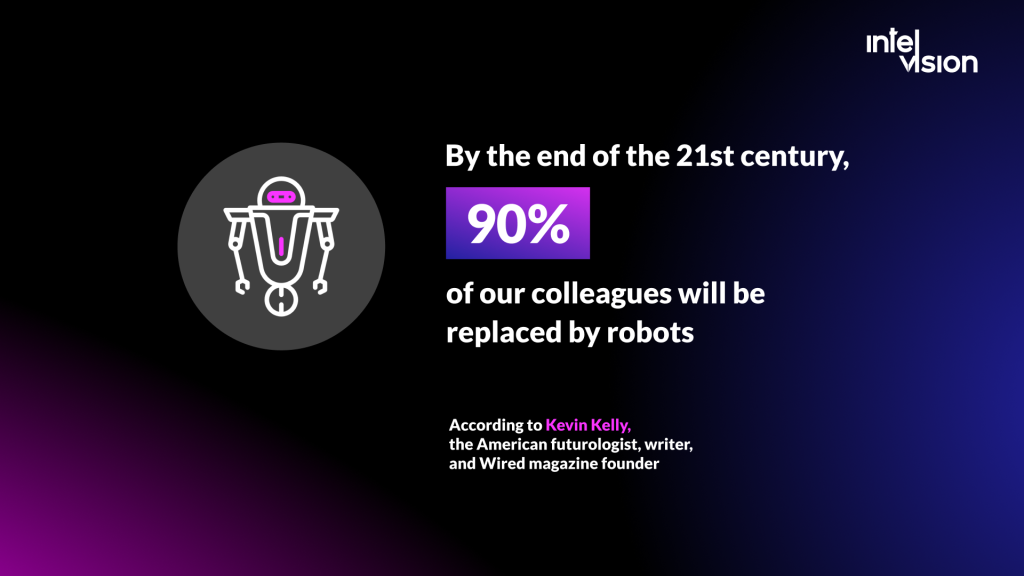
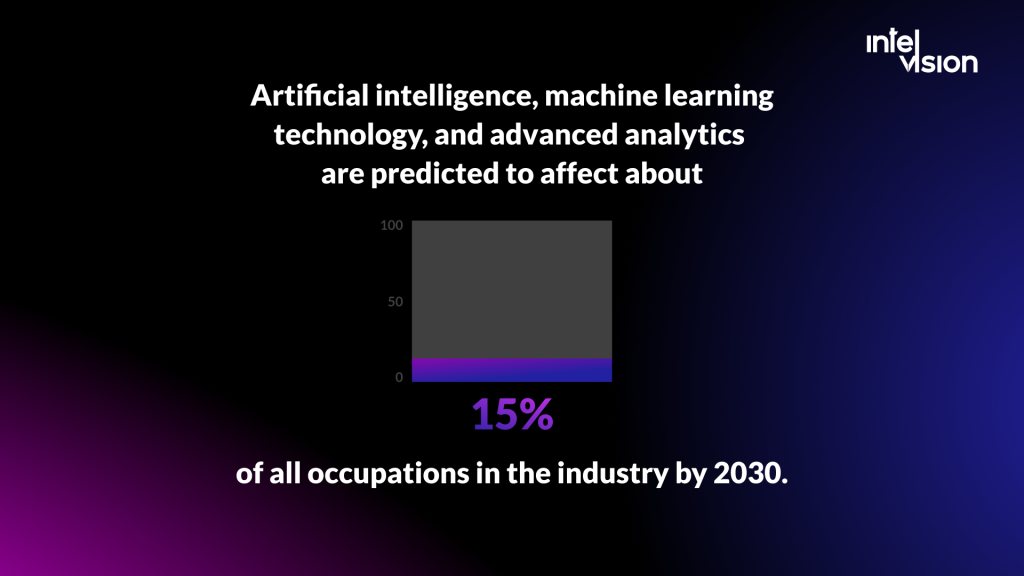
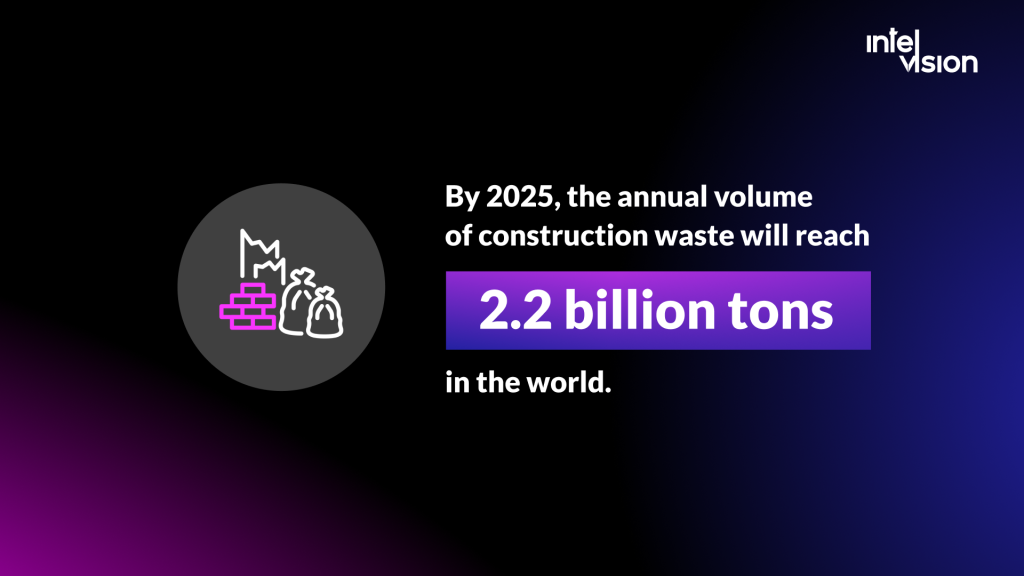
![$portfolio_img_mobile['title'] $portfolio_img_mobile['alt']](https://intelvision.pro/wp-content/uploads/2022/11/Visoplan.-Mobile-banner-263x350.png)


